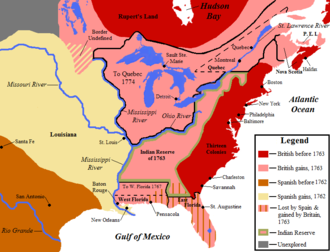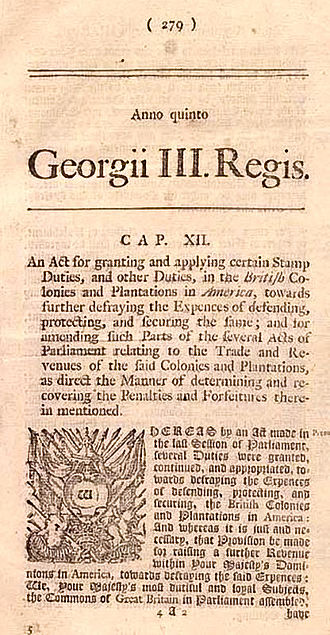American Revolution





The American Revolution was a pivotal event in the history of the United States, marking the nation's independence from Great Britain. Spanning from 1765 to 1783, it encompassed both political upheaval and military conflict, leading to the formation of a new, sovereign nation. This article delves into the causes, key events, and outcomes of the American Revolution, providing a comprehensive overview of this critical period.
Causes[edit]
The roots of the American Revolution can be traced back to a series of actions taken by the British government, which the American colonists found increasingly oppressive. Key issues included the imposition of taxes without representation, such as those mandated by the Stamp Act of 1765 and the Townshend Acts of 1767, and the restriction of colonial trade and expansion through various laws and measures. The slogan "no taxation without representation" encapsulated the colonists' grievances and became a rallying cry for resistance against British rule.
Key Events[edit]
The American Revolution comprised several pivotal events that escalated tensions and ultimately led to war:
- The Boston Massacre (1770): A confrontation between British soldiers and American colonists that resulted in the deaths of five colonists, inflaming anti-British sentiments.
- The Boston Tea Party (1773): A protest against the Tea Act, in which American patriots disguised as Mohawk Indians dumped 342 chests of British tea into Boston Harbor.
- The First Continental Congress (1774): A meeting of delegates from twelve of the Thirteen Colonies, which resulted in a decision to impose an economic boycott on British goods.
- The Battles of Lexington and Concord (1775): The first military engagements of the American Revolutionary War.
- The Declaration of Independence (1776): A document declaring the colonies' independence from Britain, drafted by Thomas Jefferson and adopted by the Second Continental Congress.
Outcomes[edit]
The American Revolution culminated in the signing of the Treaty of Paris (1783), which officially ended the war and recognized the sovereignty of the United States. The revolution had profound effects, including:
- The establishment of a republican form of government, as outlined in the United States Constitution.
- The inspiration of other independence movements around the world.
- Significant social, political, and economic changes within the newly formed United States.
Legacy[edit]
The American Revolution is celebrated as a foundational moment in the history of the United States, embodying ideals of liberty, democracy, and resistance against tyranny. It is commemorated annually on July 4th, known as Independence Day.
Ad. Transform your life with W8MD's Budget GLP-1 injections from $75


W8MD offers a medical weight loss program to lose weight in Philadelphia. Our physician-supervised medical weight loss provides:
- Weight loss injections in NYC (generic and brand names):
- Zepbound / Mounjaro, Wegovy / Ozempic, Saxenda
- Most insurances accepted or discounted self-pay rates. We will obtain insurance prior authorizations if needed.
- Generic GLP1 weight loss injections from $75 for the starting dose.
- Also offer prescription weight loss medications including Phentermine, Qsymia, Diethylpropion, Contrave etc.
NYC weight loss doctor appointmentsNYC weight loss doctor appointments
Start your NYC weight loss journey today at our NYC medical weight loss and Philadelphia medical weight loss clinics.
- Call 718-946-5500 to lose weight in NYC or for medical weight loss in Philadelphia 215-676-2334.
- Tags:NYC medical weight loss, Philadelphia lose weight Zepbound NYC, Budget GLP1 weight loss injections, Wegovy Philadelphia, Wegovy NYC, Philadelphia medical weight loss, Brookly weight loss and Wegovy NYC
|
WikiMD's Wellness Encyclopedia |
| Let Food Be Thy Medicine Medicine Thy Food - Hippocrates |
Medical Disclaimer: WikiMD is not a substitute for professional medical advice. The information on WikiMD is provided as an information resource only, may be incorrect, outdated or misleading, and is not to be used or relied on for any diagnostic or treatment purposes. Please consult your health care provider before making any healthcare decisions or for guidance about a specific medical condition. WikiMD expressly disclaims responsibility, and shall have no liability, for any damages, loss, injury, or liability whatsoever suffered as a result of your reliance on the information contained in this site. By visiting this site you agree to the foregoing terms and conditions, which may from time to time be changed or supplemented by WikiMD. If you do not agree to the foregoing terms and conditions, you should not enter or use this site. See full disclaimer.
Credits:Most images are courtesy of Wikimedia commons, and templates, categories Wikipedia, licensed under CC BY SA or similar.
Translate this page: - East Asian
中文,
日本,
한국어,
South Asian
हिन्दी,
தமிழ்,
తెలుగు,
Urdu,
ಕನ್ನಡ,
Southeast Asian
Indonesian,
Vietnamese,
Thai,
မြန်မာဘာသာ,
বাংলা
European
español,
Deutsch,
français,
Greek,
português do Brasil,
polski,
română,
русский,
Nederlands,
norsk,
svenska,
suomi,
Italian
Middle Eastern & African
عربى,
Turkish,
Persian,
Hebrew,
Afrikaans,
isiZulu,
Kiswahili,
Other
Bulgarian,
Hungarian,
Czech,
Swedish,
മലയാളം,
मराठी,
ਪੰਜਾਬੀ,
ગુજરાતી,
Portuguese,
Ukrainian
